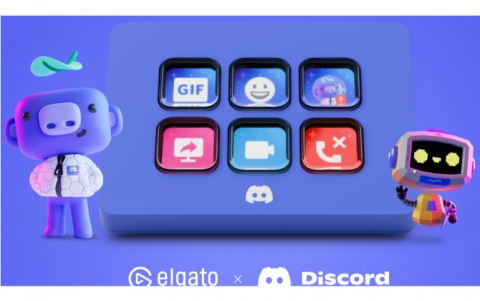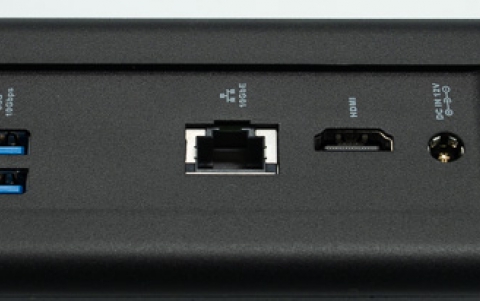
2002 marks turning point in international copyright law...
The entry into force of the the WIPO Copyright Treaty (WCT) and the WIPO Phonograms and Performances Treaty (WPPT) in 2002 marked a milestone in the history of copyright law and signalled greater security for all categories of creators in cyberspace by providing the legal basis to prevent unauthorized use of their works on digital networks such as the Internet.
These two ground-breaking treaties bring copyright law in line with the digital age and promise to open new horizons for composers, artists, writers, and performing artists such as singers and musicians, producers and other business, to use the Internet with confidence to create, distribute and control the use of their works within the digital environment.
The WCT and WPPT were agreed in 1996 and became law on March 6 and May 20, 2002 respectively. To date 39 countries have signed up to both the WCT and WPPT. These treaties are of key importance as they will help to boost the future development of the Internet, electronic commerce and the culture and information industries by ensuring the quality and authenticity of digital content. This will enable creators, performers, producers and associated industries to reap the financial rewards of their talent, creativity and investment.
The focus in 2003 will be to ensure much wider adherence to the treaties and help countries to effectively implement the two treaties. Also, efforts will center on creating wider public awareness of the treaties and of the use of protected works on the Internet.
With regard to the issue of protection of performers' rights in their audiovisual performances, WIPO member states will shortly decide on a possible ad hoc informal meeting aimed at relaunching international discussions on outstanding issues. The meeting will be open to all WIPO member states and interestested intergovernmental and non-governmental organizations. The Diplomatic Conference on the Protection of Audiovisual Performances in December 2000 had made significant progress in shoring up the rights of performers in their audiovisual performances.
Peformers currently enjoy international protection for their performances under the Rome Convention for the Protection of Performers, Producers of Phonograms and Broadcasting Organizations (the Rome Convention) and under the WPPT which modernizes and updates these standards to cover use of their performances on the Internet. These conventions, however, grant protection mainly in relation to sound recordings of performances, and they only address the audiovisual aspects of performances to a very limited extent.
The successful conclusion of an international instrument for the protection of audiovisual performances would strengthen the position of performers in the audiovisual industry by providing a clearer legal basis for the international use of audiovisual works, both in traditional media and in digital networks. Although the primary beneficiaries of such an agreement are performers, mainly actors and musicians, producers and distributors also stand to benefit through harmonization of protection in different nations thereby facilitating international commerce and the exchange of films and television programs between countries. The making of a film or other audiovisual work involves contributions from many different individuals often from a variety of countries. Increasingly, the film productions that are delivered to our cinema and television screens are produced and financed across national borders. Such arrangements underline the importance of creating an international operating environment which balances different interests and defines the intellectual property rights of the parties involved.
In the field of broadcasting rights, WIPO member states made progress in international discussions on the rights to be granted to broadcasting organizations in a possible new multilateral treaty, which would, if adopted, update international regulations in this area bringing them in line with today's technological developments and market behavior.
Talks to update the intellectual property rights of broadcasters, which are currently dealt with in the 1961 Rome Convention, began in the 1990s. The advent of radically new types of communications, content, creation and distribution, especially over the Internet has made it necessary to review and upgrade existing international standards to ensure an appropriate balance between the different interests of all stakeholders and those of the general public.
While there is agreement on the need to upgrade these rights, differences still exist between member states on key issues. First, these relate to who should be the beneficiaries, namely whether only organizations which broadcast over the air are to be given better protection, or whether such protection should be extended to cablecasters and certain categories of webcasters. Secondly, they relate to the rights to be granted to those beneficiaries, in particular, the right of fixation, the right of reproduction of fixations, the right of re-broadcasting, the right to decrypt encrypted broadcasts, and the right to rent fixations of broadcasts to the public.
In addition to broadening the membership of the WCT and WPPT, and to fostering progress in the negotiations relating to performers'rights and protection for broadcasting organizations, WIPO's copyright activities in the coming year would gradually also cover issues such as the protection of databases, the responsibility of Interet service providers (ISPs), applicable law in respect of international infringements, voluntary copyright recordation systems, resale right or "droit de suite", the economics of copyright, collective management of copyright and related rights, protection of folklore, ownership of and authorization to use multimedia products and practical aspects of implementation of the WCT and WPPT.
The WCT and WPPT were agreed in 1996 and became law on March 6 and May 20, 2002 respectively. To date 39 countries have signed up to both the WCT and WPPT. These treaties are of key importance as they will help to boost the future development of the Internet, electronic commerce and the culture and information industries by ensuring the quality and authenticity of digital content. This will enable creators, performers, producers and associated industries to reap the financial rewards of their talent, creativity and investment.
The focus in 2003 will be to ensure much wider adherence to the treaties and help countries to effectively implement the two treaties. Also, efforts will center on creating wider public awareness of the treaties and of the use of protected works on the Internet.
With regard to the issue of protection of performers' rights in their audiovisual performances, WIPO member states will shortly decide on a possible ad hoc informal meeting aimed at relaunching international discussions on outstanding issues. The meeting will be open to all WIPO member states and interestested intergovernmental and non-governmental organizations. The Diplomatic Conference on the Protection of Audiovisual Performances in December 2000 had made significant progress in shoring up the rights of performers in their audiovisual performances.
Peformers currently enjoy international protection for their performances under the Rome Convention for the Protection of Performers, Producers of Phonograms and Broadcasting Organizations (the Rome Convention) and under the WPPT which modernizes and updates these standards to cover use of their performances on the Internet. These conventions, however, grant protection mainly in relation to sound recordings of performances, and they only address the audiovisual aspects of performances to a very limited extent.
The successful conclusion of an international instrument for the protection of audiovisual performances would strengthen the position of performers in the audiovisual industry by providing a clearer legal basis for the international use of audiovisual works, both in traditional media and in digital networks. Although the primary beneficiaries of such an agreement are performers, mainly actors and musicians, producers and distributors also stand to benefit through harmonization of protection in different nations thereby facilitating international commerce and the exchange of films and television programs between countries. The making of a film or other audiovisual work involves contributions from many different individuals often from a variety of countries. Increasingly, the film productions that are delivered to our cinema and television screens are produced and financed across national borders. Such arrangements underline the importance of creating an international operating environment which balances different interests and defines the intellectual property rights of the parties involved.
In the field of broadcasting rights, WIPO member states made progress in international discussions on the rights to be granted to broadcasting organizations in a possible new multilateral treaty, which would, if adopted, update international regulations in this area bringing them in line with today's technological developments and market behavior.
Talks to update the intellectual property rights of broadcasters, which are currently dealt with in the 1961 Rome Convention, began in the 1990s. The advent of radically new types of communications, content, creation and distribution, especially over the Internet has made it necessary to review and upgrade existing international standards to ensure an appropriate balance between the different interests of all stakeholders and those of the general public.
While there is agreement on the need to upgrade these rights, differences still exist between member states on key issues. First, these relate to who should be the beneficiaries, namely whether only organizations which broadcast over the air are to be given better protection, or whether such protection should be extended to cablecasters and certain categories of webcasters. Secondly, they relate to the rights to be granted to those beneficiaries, in particular, the right of fixation, the right of reproduction of fixations, the right of re-broadcasting, the right to decrypt encrypted broadcasts, and the right to rent fixations of broadcasts to the public.
In addition to broadening the membership of the WCT and WPPT, and to fostering progress in the negotiations relating to performers'rights and protection for broadcasting organizations, WIPO's copyright activities in the coming year would gradually also cover issues such as the protection of databases, the responsibility of Interet service providers (ISPs), applicable law in respect of international infringements, voluntary copyright recordation systems, resale right or "droit de suite", the economics of copyright, collective management of copyright and related rights, protection of folklore, ownership of and authorization to use multimedia products and practical aspects of implementation of the WCT and WPPT.





















